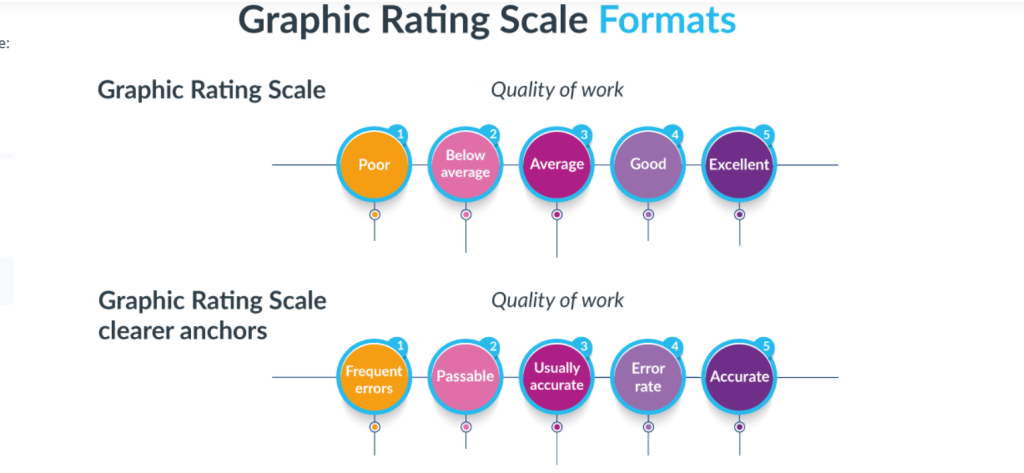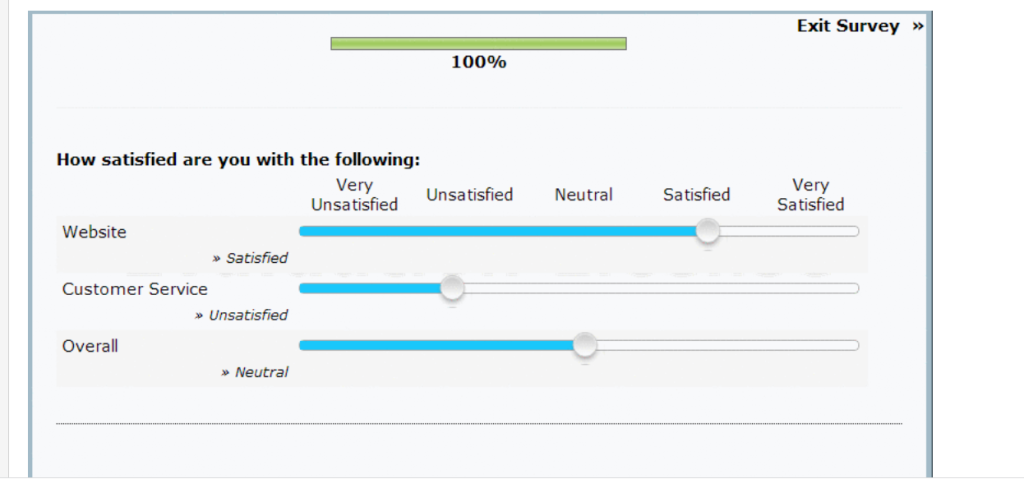
We get it; the options to make your surveys more interactive are endless. But why are survey rating scales questions the most common?
Before we get into this, know that surveys are made to attract respondents. So, the more interactive and easy to fill out they are, the more likely you are to boost your response rate. And rating scales do just that.
They are easy to fill out, easier to understand, and more engaging than any other question type. Moreover, rating scales are not just about numerical scales but also other types like star and word ratings.
So, if you are creating a survey and would like to explore more about this question type, we have got you all covered. This blog will cover everything you need to know about them.
Let’s get started!
What Are Survey Rating Scales?
A survey rating scale is a close-ended question type with weights assigned to each answer option. This question is typically used to gather a viewpoint by offering two extremes, like Extremely Satisfied or Extremely Unsatisfied.
This scale helps the survey quantify subjective sentiments like loyalty, satisfaction, perception, or experience.
Here are some basic examples of survey rating scales:
- A customer’s satisfaction level with your product or service
- The likelihood of recommending that product or service
- The agreement level with a statement
- The extremity level with navigating a new software
Why Should You Be Using A Survey Rating Scale?
It is easier to understand quantity over quality when analyzing anything. A rating scale helps you to convert abstract thoughts into quantifiable forms. This allows you to analyze your data better and understand the degree of those abstract thoughts.
In this question type, every option holds a different extremity level, which helps you understand your target audience better. This can also help you know the quality of your services or products.
While you can add different extremity levels to your multiple-choice questions, rating scales are better, especially when it comes to a thriving, engaging element.
Different Types of Rating Scales
There’s a lot to explore when it comes to rating scales. You can either make yours basic in the form of MCQ or instill an appeasing vibe through some graphics. Here are some of the most common rating scales types for your surveys:
Graphic Scales

This is perhaps the most used rating scale. Instead of measuring the degree of complexity through numbers, this type uses images. A star rating scale is a typical example of a graphic scale.
For instance, when you give a review on Google, you are asked to rate the product/service by providing a star rating. Here, one star means poor, while five stars resonate with extraordinary services.
Apart from a star rating, a particular online survey building tool allows you to use emoticons. This will enable you to measure your customer’s comfort or discomfort level easily.
Moreover, such pictorial representations can also let you take feedback from people who are not too fluent in your language.
Slider Rating Scale

A slider rating scale allows the respondents to answer the question by dragging the slider to an appropriate answer option. This question type is a great way to reduce the response time and keep the respondents engaged.
This scale type is generally used when there are a lot of options. For instance, this scale type can be used if you want your respondents to rate their product satisfaction level from 1-10.
The respondents can even adjust this slider at a decimal level, thus allowing you to get accurate responses.
Frequency Scale
Your product can have good and bad features. For instance, if you sell a face wash, it might be good to use in terms of fragrance, but some customers might find them pricey. A frequency scale can help you understand what your customers think of your product.
This rating scale allows you to understand customer interactions and your product/service’s touchpoints. Depending on the type of your survey, you can add options like “Every day,” “Sometimes,” or “Rarely” to capture actual feelings.
Comparative Scale
You can use a comparative scale to understand which feature makes your product stand out.
For instance, you can ask a question like “Which features do you like the most in our product?” and offer choices like “Affordability,” “Aesthetic,” or “Shipping” to get yourself a comparative analysis.
Under this rating scale, you can also offer just two options and allow the respondents to choose what they like the most. This will help you gain a comparative analysis. The results can, then, be used to understand how your product or service is doing in the market.
RELATED: Using Bogardus Social Scale In A Survey: What You Need To Know?
Perks Of Using Survey Rating Scales
Here are the key benefits of using rating scale question type:
They are easy to understand.
Survey rating scales are universal methods to collect accurate data. They are catchy and easy to comprehend. Moreover, they also allow the respondents to fill out the survey quickly without much anticipation.
Whether you understand the satisfaction level or tap into the pain points, this versatile question type can help you.
They help monitor brand loyalty.
Because rating scales have different options, valued at different levels, you can use rating scales like NPS to track your customer’s loyalty.
NPS or Net Promoter Score allows the surveyor to gauge customer understanding and monitor brand loyalty. This keeps you one step ahead of the competition.
It allows for quick analysis.
One of the best think about a rating scale is that the responses are easy to analyze. Because this question type converts abstract feelings into quantifiable forms, they are not that tricky to comprehend.
Moreover, unlike open-ended questions, there are no loose ends. Once you have the responses, you can easily create reports with just a few clicks.
SurveyPoint is the place to go if you want your surveys to have greater interactivity. You can ask questions using a variety of grading scales on this site. It adds a fun element to your survey.
In addition to real-time data tracking, SurveyPoint provides a straightforward drag-and-drop interface for generating in-depth analytical reports.
RELATED: How Likert Scale Survey Can Bring Your Business The Most Value
Summing It Up
Survey rating scales are the quickest and more straightforward question types. They keep the audience engaged. From the surveyor’s point of view, these questions are also easy to analyze. With the insights shared in this blog, you can use this question type to the fullest and keep your surveys more fun to fill out.
Not sure where to begin?
Explore our solutions to discover what is most important to your customers, clients, and prospects. Brownie points – it doesn’t take any coding!
Free Trial • No Payment Details Required • Cancel Anytime




